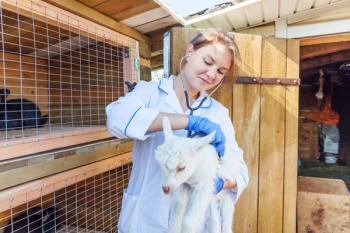
Birds, Giraffes on Updated "Red List" of Threatened Species
The latest update of The IUCN Red List of Threatened SpeciesTM reveals that over 80 newly recognized bird species are threatened with extinction. The update also highlights a devastating decline for the giraffe.
Over 700 newly recognized bird species have been assessed for the latest update of The IUCN (International Union for Conservation of Nature and Natural Resources) Red List of Threatened Species, and 11% of them are threatened with extinction. The update also reveals a devastating decline for the giraffe.
Birds
The overall number of bird species assessed by the Red List now exceeds 11,000—of which 742 species are newly recognized. Of these, 11% are threatened. For example, the recently described Antioquia wren (Thryophilus sernai) has been listed as Endangered because more than half of its habitat could be wiped out by a single planned dam construction. Habitat loss to agriculture and degradation by invasive plants have also pushed the striking Comoro blue vanga (Cyanolanius comorensis) into the Endangered category.
Thirteen of the newly recognized bird species enter the IUCN Red List as Extinct. Several of these have been lost within the past 50 years, including the Pagan reed-warbler (Acrocephalus yamashinae), O'ahu akepa (Loxops wolstenholmei), and Laysan honeycreeper (Himatione fraithii). All these species were endemic to islands, and were most likely wiped out by invasive species.
“Unfortunately, recognizing more than 700 ‘new’ species does not mean that the world's birds are faring better,” says Dr. Ian Burfield, global science coordinator of BirdLife International. “As our knowledge deepens, so our concerns are confirmed: unsustainable agriculture, logging, invasive species and other threats—such as the illegal trade highlighted here—are still driving many species towards extinction.”
IUCN Red List assessments also reveal that some of the world's most popular birds may soon disappear in the wild if appropriate action isn't taken. Popular species, such as the African grey parrot (Psittacus erithacus), are facing extinction in the wild due to unsustainable trapping and habitat loss. Native to central Africa, the grey parrot has seen its conservation status deteriorate from Vulnerable to Endangered. A study led by BirdLife International discovered that grey parrot numbers have decreased in some parts of Africa by as much as 99%.
In Asia, the rufous-fronted laughingthrush (Garrulax rufifrons), scarlet-breasted lorikeet (Trichoglossus forsteni), and Straw-headed bulbul (Pycnonotus zeylanicus) are among a suite of species being uplisted to higher threat categories as a result of the impacts of illegal wildlife trade. There is now evidence that unsustainable levels of capture for the cagebird trade are driving the deteriorating status of many species.
There is good news for some of the rarest and most vulnerable birds on our planet—those that exist only on small, isolated islands. The Azores bullfinch (Pyrrhula murina), St Helena plover (Charadrius sanctaehelenae), and Seychelles white-eye (Zosterops modestus) are among the island-endemic species to move to lower categories in this IUCN Red List update, as their populations recover from the brink of extinction thanks to tireless conservation efforts.
Giraffes
The iconic giraffe (Giraffa camelopardalis), one of the world's most recognizable animals, is now threatened with extinction. The species, which is widespread across southern and eastern Africa, with smaller isolated subpopulations in west and central Africa, has moved from Least Concern to Vulnerable due to a dramatic decline from about 157,000 individuals in 1985 to 97,562 in 2015.
The growing human population is having a negative impact on many giraffe subpopulations. Illegal hunting, habitat loss, changes through expanding agriculture and mining, increasing human—wildlife conflict, and civil unrest are all pushing the species toward extinction. Of the nine subspecies of giraffe, three have increasing populations, five have decreasing populations, and just one is stable.
A resolution adopted at the IUCN World Conservation Congress in September this year called for action to reverse the decline of the giraffe.
Newsletter
From exam room tips to practice management insights, get trusted veterinary news delivered straight to your inbox—subscribe to dvm360.




